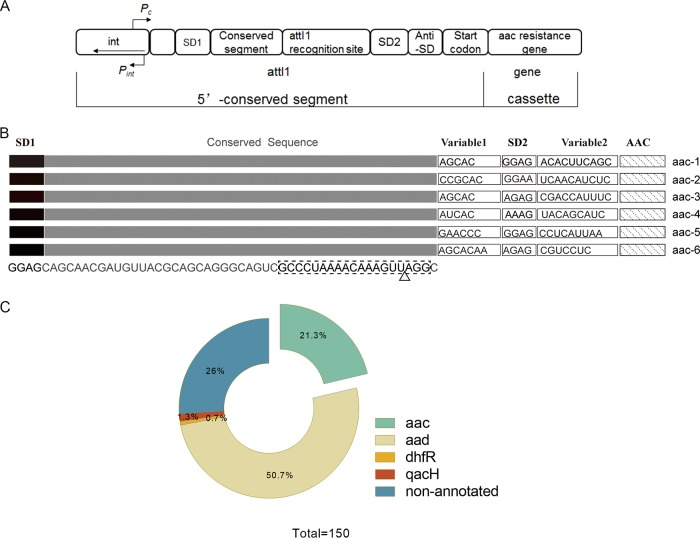FIG 1.
(A) The conserved 5′ segment of the class 1 integrons. The strong promoter Pc (8, 9, 35) transcribes the inserted gene cassette (i.e., the aac resistance gene), while the divergent promoter Pint transcribes the integrase (int) gene. Single-gene cassettes are inserted by int-mediated recombination between int recognition sites. The int expression is linked to the SOS response that can only be induced by nonaminoglycoside antibiotics in E. coli. (B) The leader aac riboswitch RNAs from the different pathogens, the positions of the ribosome binding sites SD1 and SD2, conserved sequences, and variable sequences are indicated; the anti-SD sequences are located within the variable 2 region. The RNA is located between the divergent int and aac genes at the conserved 5′ end of the integron. The dashed box shows the equivalent positions in the RNA of the core DNA attI-1 recognition site, and the triangle indicates the approximate position of the attC 3′ DNA insertion. (C) The BLAST search results for the aac and aad riboswitch sequence from P. fluorescens. A total of 111 of the top 150 BLAST sequences were annotated to identify the neighboring genes. The majority of neighboring resistance genes were aad (n = 76) and aac (n = 32), although one non-aminoglycoside resistance gene, that for dihydrofolate reductase (dhfR), as well as a nonfunctional multidrug exporter gene (qacH), were also noted.

